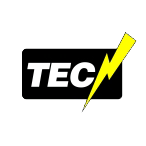Storm FAQ Pertaining to Service Interruption
Frequently asked questions from Thumb Electric Cooperative members when service is interrupted by a storm.
Storm FAQ
Q. What are TEC’s priorities for service restoration?
A. TEC will work around the clock until service is restored, though daylight hours are needed for some activities. Safety of personnel and the public will remain our highest priority. The priorities are:
- Assessing the overall system and repairing power plants, major lines and substations that carry power from plants to communities.
- Restoring power to key services essential to community safety, health and welfare.
- Making repairs to electrical facilities that will return service to the largest number and so on until power is returned to everyone.
Q. How does TEC determine who has lost service and what repairs are needed?
A. As calls come in, our outage management software helps us make an initial damage assessment. These initial observations help us understand the repairs that may need to be made to key facilities like transmission lines, substations and main power lines before we can begin the restoration process for members. After the initial assessment, we dispatch patrol teams to conduct neighborhood-by-neighborhood assessments. These teams report electrical equipment damage and what repairs may be needed.
Q. How will fallen trees near power lines be handled?
A. One of our top priorities will be to remove trees and debris that have damaged electrical equipment and are preventing service restoration. Members should not attempt to remove or trim foliage within 15 feet of a power line. If a tree or tree limbs have fallen on a power line or pulled it down, do not attempt to get within 25 feet of the power line. All lines down should be considered live and extremely dangerous. Call TEC at 1-800-327-0166 or 1-989-658-8571 and report it. Safety is always our first priority.
Q. Why would TEC crews pass my house without repairing anything?
A. If you see a TEC crew passing but not stopping, it may be because work at a nearby location must be performed before electric service can be restored to you and your neighbors, or they may be searching for the outage cause.
Q. Why am I the only house in the neighborhood without power?
A. Fuses or circuit breakers in your home could have tripped and halted power, tree limbs could have fallen on the line serving your home, fuses on the transformer that serves your home may have tripped or could be damaged, and the primary line feeding the transformer could be damaged.
Q. Why do I only have electricity in one part of my house?
A. You could have a tripped circuit breaker, a blown fuse or a broken connector or wire at one of the service leads to your house. Sometimes damage to these leads leaves only the 120-volt outlets (or some of them) working. In this case, larger appliances that need 240-volt service such as water heaters, air conditioning and ovens may be inoperable until repairs are made.
Q. The electrical service line from the pole to my house appears to be pulled away from the house. What should I do?
A. TEC personnel will be inspecting service lines and will determine if an electrician is required to fix the damage or if TEC can make repairs. Piping that houses wires attached to the side of your home or business is considered part of the house wiring and can only be worked on by a licensed electrician.
Q. Why are my electric motors or machines running backward?
A. Turn off the machinery immediately and call TEC. A technician will determine whether electric power phases were connected properly.
Q. If my lights come on, can I expect them to stay on?
A. Once service is restored, we make every effort to keep it on; however, as we repair other parts of our system, some interruptions may occur.
Q. What are the vulnerabilities of underground versus overhead electric service?
A. Overhead lines are exposed to high winds and flying debris. Underground facilities can be subject to flooding. Repair and replacement time is about the same for equipment with similar functions. Repairs may take longer if an underground fault needs to be located and repaired.
Q. Are there some general expectations regarding how long restoration might take following a severe storm? What kind of situations could prolong the effort?
A. Restoration will depend in part on how wide an area is significantly impacted. TEC’s service territory covers three counties and around 2,000 miles of line. If large transmission lines are damaged, it can take several days to repair. Resetting poles is the most time-consuming restoration process.
Q. Do politicians, employees, and other important individuals get special attention?
A. No! TEC does not give preferential treatment. It is contrary to storm restoration plan and company policy to single out any individual for priority electric service restoration. Work is not assigned according to when customers report their outage, where they live or the status of their account.
